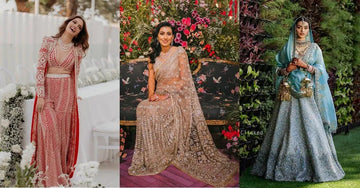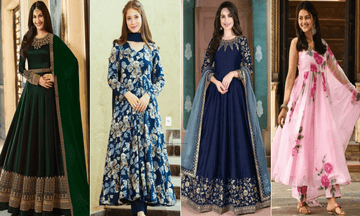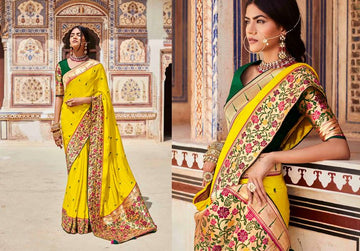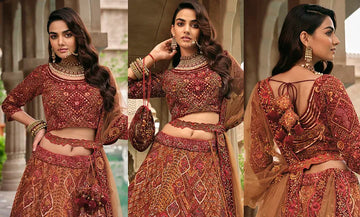India flaunts its traditional embroidery with a rich cultural heritage. On the Indian Fabrics, Indian craftsmanship is well reflected with the help of these traditional embroideries. From Banjara to Chikankari, each place in India brags the embroideries, adding extra value to the fabric. We have listed down traditional Indian embroideries that can be perfect for your Indian Dresses:
Chikankari
Chikankari, originated from Lucknow, Uttar Pradesh is one of the most famous embroideries in India. It was introduced with a white thread on the white fabric, but other colors were added after some time. During the summer season, Chinkari Kurtas and Sarees are the most trending Indian Dresses.
Phulkari
Phulkari, originated from Punjab, this embroidery uses multicolor threads and Khaddar (a special traditional fabric). Due to the versatility and multi-color glam, the dupattas made up of Phulkari embroidery are popular.
Zari/Zardosi
The "Zardosi" word is derived from two Persian words Gold (which means Zari) and Embroidery (which means Dosi). In this type of embroidery metallic thread is used on velvet and silk fabric. Zari work is seen most commonly in sarees, salwar suits, and Indian lehenga choli.
Aari
Aari is originated from the Mughals, and this kind of embroidery was started in Gujrat now it is found in other states as well like Kashmir, Lucknow, and Rajasthan. This embroidery is mostly done on cotton and fine silk fabrics. Aari embroidery is commonly seen on Cotton Kurta and Indo Western Dresses.
Banjara
The Banjara embroidery is a unique fusion of mirror work and patchwork with classic embroidery. This type of embroidery uses bells, mirrors, coins, etc. to make the dress vibrant and can be used as daily ethnic wear. Short Kurti and Chaniya Choli are some of the most common dresses made by Banjara embroidery.
Gota Work
Gota or Gota Patti work, originated from Rajasthan is a traditional applique embroidery. Gota Patti work is most commonly done on lightweight fabrics like tussar silk, georgette, and chiffon. Earlier lehengas, bridal dupattas, and sarees were made with this kind of embroidery but now kurtas, blouses, jackets, etc. are also made.
Mirror Work
Mirror work, originated from Rajasthan, also known as Shisha, is done by using various pieces of reflective metal or mirror in different shapes and sizes and stitching on the fabric meticulously in a beautiful manner. Mirror work embroidery is seen most commonly on traditional Rajasthani dresses, blouses, ghagras, etc.
Toda
Toda embroidery, originated from the Toda tribe is done by the Toda pastoral people in the Nilgiri Hills of Tamil Nadu. In this type of embroidery, red and black threads are used on white cotton fabric. The major advantage is that we can use both sides of the embroidered fabric.
From the above-mentioned traditional embroidery designs, you can take inspiration and choose which can be perfect for your Indian Dress.


















